30 August 2013
In response to great demand, we have decided to publish on our site the long and extraordinary interviews that appeared in the print magazine from 2009 to 2011. Forty gripping conversations with the protagonists of contemporary art, design and architecture. Once a week, an appointment not to be missed. A real treat. Today it’s Daniel Gustav Cramer’s turn.
Klat #04, fall 2010.
Daniel’s work could function as a kind of micro-cosmos of the world. Each individual work is proposing a system, this one system that is the world around us, shifted every time, viewed from a different angle. The complexity only really appears once one comes across several of these works together. Often they give hints of their representative nature, they are circular, arranged in order, take on the appearance of a book. Despite their detachment and closeness, which one is repeatedly confronted with at first, there is a poetic warmth, a sense of “me in my time.” The works raise questions, or perhaps one asks questions when faced with those works: question on the nature of man, time, memory and one’s own origins.
The first time we talked together it was about a picture of a monkey. You tell me that it was a coincidence: you saw the monkey sitting in a spot of light somewhere in the forest. Then, much later, you felt conscious of the situation: a portrait of mother and child. I would like to know how you make a picture. The idea of “previsualization” is quite important in the photographer’s lexicon, but I don’t know if it’s important for you. Do you have to work a long time before you know what you want for the final print or does it appear instantly with intuition?
Looking at the image of the monkey now, it feels rather staged, the way the light falls and the posture, although, as you pointed out, it was an unexpected encounter. I guess I can best describe the way I work by outlining two processes. One is obvious: I am talking with friends, missing people that are close to me, enjoying moments and places, and through that ideas for works come up. These ideas are usually quite plain. They might have to do with order, with numbers for example, or rhythm, or personal memories, with loss or joy. Usually I carry them around with me, or I write them down. The second process runs parallel, but often feels almost detached from the first. I am collecting things. Old and unused papers. Wherever I go, I always keep an eye on them. In my storeroom I have some really old ones from Akureyri, a city in Iceland, right next to old school books made for pupils from a Japanese island. Recently I have started collecting postcards of places with identical names. Oxford in New Zealand, Melbourne in the United States. I don’t know if they will ever leave their box really. Certainly, my most extensive archive is that of photographic negatives. I have files in boxes organized on several shelves in my studio. When I am traveling, I photograph a lot. I was working on a project in Yakushima, a small island south of Japan, where I saw the monkey you mentioned sitting nearby. Once the photograph was taken and developed, it found its place in the archive. At times, these two processes meet and a work comes into form. I like to think of these processes as two movements, one coming from the past, memories, ideas or life experience of some sort, while the other is heading toward the future, being an archive of yet unused things that might find their place somewhere one day.
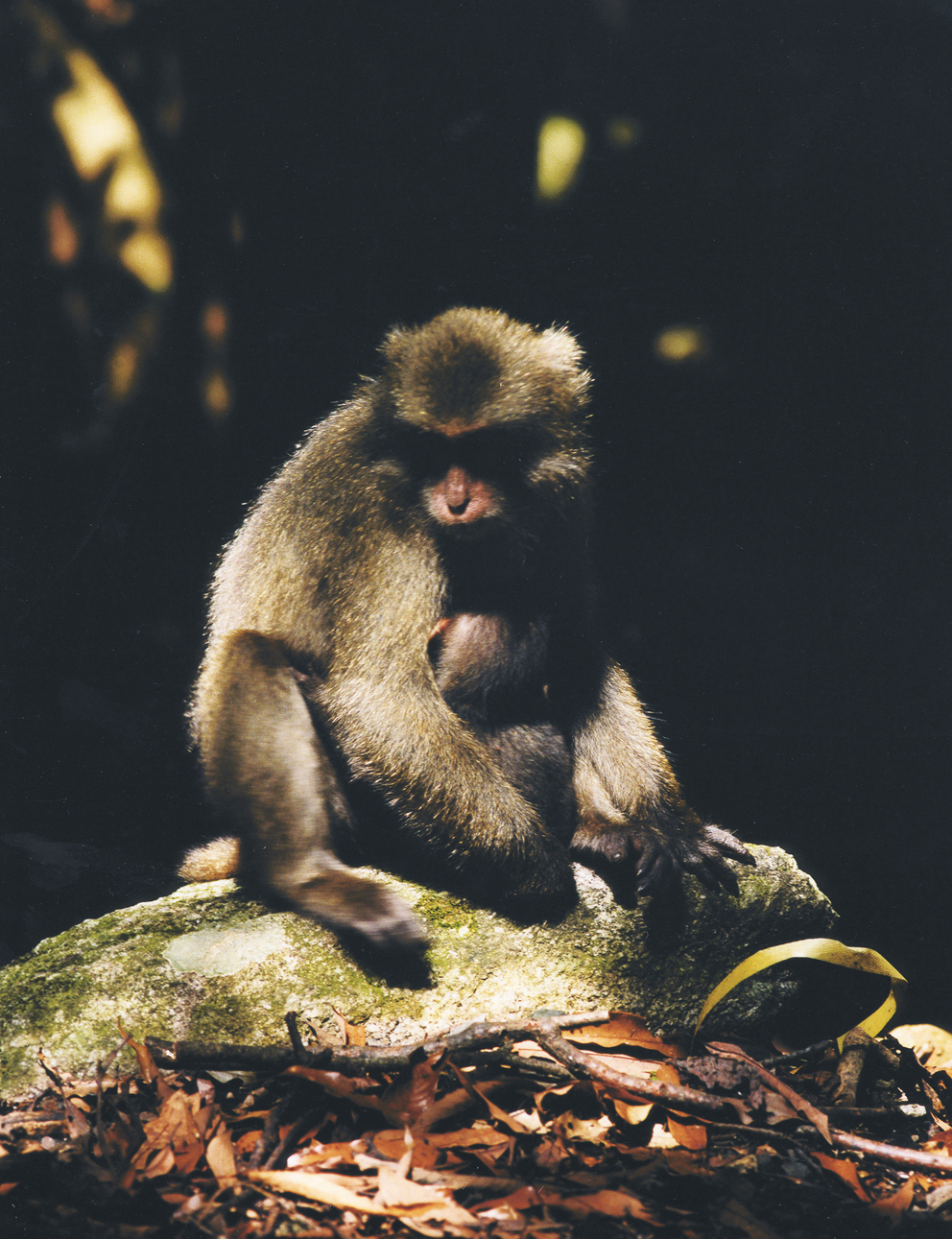
Daniel Gustav Cramer, Untitled (Monkey), 2009. Courtesy: BolteLang Galerie, Zurich, and Daniel Gustav Cramer.
It’s true that I first thought of looking at your work from the viewpoint of your practice of photography, but I’m very happy to consider it through the framework of the archive. Which is also relevant to a conceptual approach in your work, not unlike On Kawara maybe, in Danke for instance.
There is something quite human about archives. I guess every archive has at its center a call for completion, a kind of infinite hole constantly and urgently drawing in all related artifacts. Next to this stands the certainty of its own failure: however much one tries, an archive is destined to be incomplete, its status “unfulfilled.” I have recently finished a compilation of all known and defined objects circling around the sun (planets, moons, asteroids, centaurs), categorized according to their distance to the sun. There is a sense of wholeness in this, despite the knowledge that with new technologies further objects will be discovered in coming years. Estimates of the density, size, materials of distant dwarf planets and asteroids are given, but indisputably lack precision. One is left with numbers and figures offering nothing but uncertainty, yet creating a vague and beautifully simplified image. For me, Danke is as much a book as an emotional gesture, something personal. A large leather book that includes all those people I wanted to express gratitude to, appearing page by page in alphabetical order. For Danke, I was searching for a form, something simple and straight, so I decided to invert the book’s structure and place a part of the colophon at its center. I very much appreciate the work of On Kawara. For me, it is astonishing how he is able to devote his entire life to a more or less single conceptual idea. However he develops, he will live with the burden of not being able to change his mind about the work, as it will only come to a conclusion once his life ends. There is both beauty and harshness in this idea, in the way he positions himself as a mortal being in time. Thinking about my work, I cannot really see it as being driven by concept. Although each work has an inherent logic, which means that logic in itself involves concept, it is not a consideration, but rather an element of the work. The work never serves the concept. The concept is rather a starting point from where I can freely explore the potential that has been laid out. And quite often, the concept is transformed during the process and might end up just as an echo of its own voice. When I make a work I am searching for a vehicle or a space in which an atmosphere or emotion or gesture or a sense of being “here” can be captured. Once this immaterial notion is held by a physical “thing,” I try to withdraw as much from it as possible: both, myself and parts of the work. In doing so, the indispensible elements that form the work become more distinct and come to light. I guess this is why the works have a sense of being conceptual. The decision to have one painting by itself, or a series of photographs, can also be considered a conceptual move. The process of making a work, for me, overlaps with the urge to simplify it, to push it to its extreme: an extreme I believe I can find in the unspectacular, or perhaps in a certain kind of silence.
Books and all the elements that form them are pivotal in your work, and now I understand better the meaning of your archive of papers and what could be its purposes. In am thinking of the way the book was used in Zurich, at the superb exhibition at the BolteLang gallery, in 2009, for instance. I’d be very curious to know how you planned the display of the books with your Paperworks.
I wanted to show two relatively complex works: the books Mother and Numbers. In an exhibition context they require a lot of space to become active and to establish and hold a conversation. I realized that as soon as something definite entered the exhibition, both of these works suffocated and turned mute. The paperworks are nearly invisible gestures: two papers connected to each other, a decreasing shadow, one sheet of paper hiding another. They create images without being visual works. This blandness seemed necessary for the balance of the construction of this exhibition. For me both, books and paperworks equally, are carriers of images.
From your archive also came the idea for The Infinite Library, a project that you created with Haris Epaminonda. Can you tell me a little more about it and how it is getting on?
We first started collaborating at college. The Infinite Library came together very naturally, ideas were bouncing back and forth. We both believe in and are always concerned with images. We have been talking for years about their mystery and power. The Library started with simple experiments of dismantling and reorganizing pages of books, placing them next to each other and observing the shifts that took place. The crucial moment was the recreation of a book: the violent act of terminating the internal cosmos that gave birth to a new one. These books reveal the elements involved in making the original books. It was important for us to preserve the sources, the original books, so that, when turning from page to page, one would experience both the original material and the transformed unity. There are so many unexpected overlaps and similarities, forms repeat patterns and themes throughout all visual documents: birds, archeology, flowers, houses, architecture. The structures of original order and reasoning have been disrupted. When going through one of those recreated books, one starts wondering about the practice of the photographer himself, who created the images years back, how the paper was produced, where it was printed, what were the initial intentions of the publisher. We have a room filled with books. Each book of the Infinite Library follows a different internal logic, sometimes inverting the original book. I believe the library has to a certain extent the possibility of bringing pictures of the world together, out of order, into chaos, yet into some strange harmony as well. The name is taken from Borges’ fantastic story of men entering a library of infinite hexagonal rooms searching for the one room that has the books of all knowledge. Our project in a sense inverts this movement. As the title suggests, we haven’t come to a final conclusion yet.
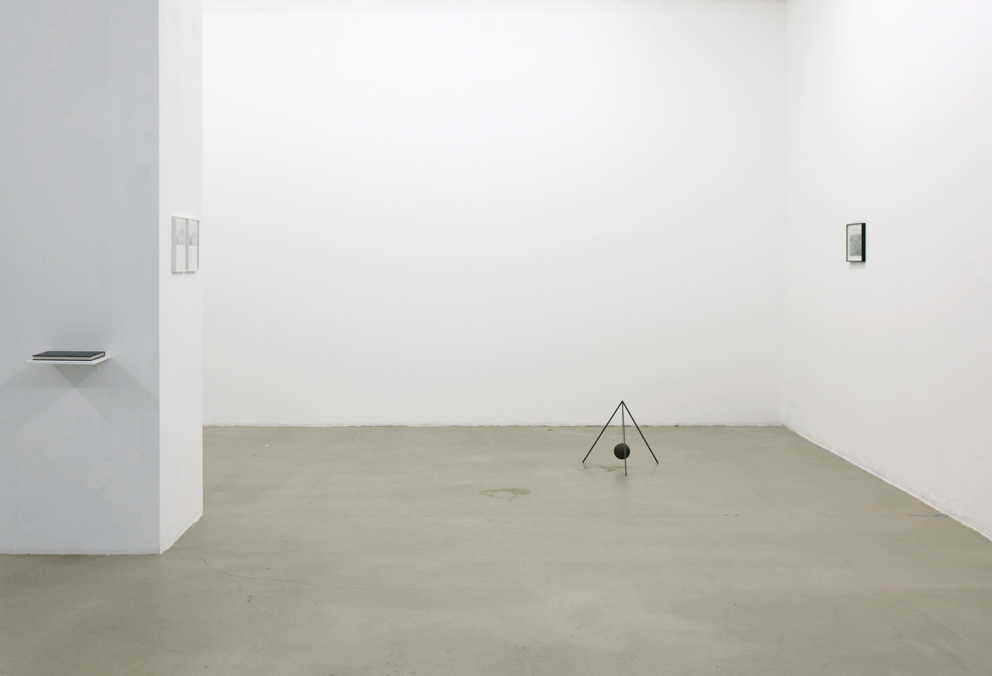
Daniel Gustav Cramer, Eight Works, Dortmunder Kunstverein, 2010.
Bruno Munari was the enfant terrible of Italian art and design for most of the last century. By questioning the nature and usefulness of books, he began a general discussion of books’ form and content and devoted part of his work to this matter. “Progress is when things get simpler, not more complicated.” Between 1956 and 1958 he produced the R.T.O.I., an acronym that in Italian stands for Theoretical Reconstructions of Imaginary Objects, on the basis of surviving fragments of uncertain origin and serving an unknown purpose. In my view, there is something similar between your works and Munari’s. In fact, I’d really like to know what are the fundamental artworks for you. The ones that have touched, fed and influenced your work. And also, which artist of the past would you like to meet?
My knowledge of Munari’s practice is rather fragmented. What I have seen so far I like very much. By posing in a light and often humorous way questions about the origin of things, of shapes, their function and meaning, he manages to deconstruct the world around us and order it anew. You are asking me about the works that have moved me and influenced my work. First of all there is music. For many years Will Oldham has been someone I have paid a lot of attention to. He can say simple things as if they were being said for the first time. His connection to his roots, to traditional American country and folk music, songwriting, the guitar and his ability to reduce, refine and reinvent are one of a kind. Jeffrey Lewis has some moments that have struck me, and certainly Gareth Dickson. There is a video recording of him singing together with Juana Molina: one of the funniest things I have seen recently. In a very different way, I am drawn to electronic music. Listening to minimal techno or house positions one right here, in this time, no past, no future. It’s almost like a time machine that has lost its gravity. Despite its ephemeral character, this music constantly deals with its own tradition and identity (Detroit, Chicago, Kraftwerk, Kompakt) and touches at the same time on the roots of human experience: rhythm, repetition, tribal trance. There are some books sitting on my shelf that have to stay there. The first to mention are Rilke’s Orpheus, Marguerite Duras’ Writing, Maurice Blanchot’s The Space of Literature. And I love film: Sokurov’s Elegy of a Voyage, Bresson’s Balthazar, Kinoshita’s Twenty-Four Eyes, all of Ozu’s movies. I would love to go on…
Emphasis on landscape, nature and wildlife seems to me to be something very important in your work. Maybe I’m more sensitive to this theme because of my position at the Centre international d’art et du paysage de l’île de Vassivière.
It’s true, I am thinking a lot about nature. Unfortunately I spend far too little time outside. As we are somehow so far away from it, an animal living in its natural habitat feels abstract, reminding me of something that is not of my world or maybe a faint memory of a time long past. In a strange way this detached gaze opens a back door into the nonhuman world, turning us into distant relatives. It is even more the case as works are not about landscape or nature, but images of it. A picture of nature relates to an origin, something from a different time. We come from nature, then through technology are disconnected from it and ultimately are willing to destroy it. I just talked with a beekeeper in the Spreewald near Berlin about the disappearance of bee populations in relation to genetically manipulated crops. These days I probably spend an hour a day researching on YouTube and other sources into what is happening in the Gulf of Mexico right now. The worst thing, next to all the fatalities in the animal world, is that BP is not questioned or criticized. The media accepts things as they are. And I am sitting there, with a cup of tea in my hand, in front of my screen, passively taking it all in. But you were asking about my relation to nature as part of the work. Using photography to document nature as an abstractum is working so well, because the medium connects us with what we can see with our own eyes and, at the same time, it excludes a part of reality, the one that remains outside the picture. Therefore, nature presents itself as real and abstract.
All of us on the art circuit travel a lot, but it is a great pleasure for me to talk with you. I am sure that during all these travels you always keep in mind some particular places or instants. Where do you like to spend time?
Perhaps our times bring the pleasure of endlessly setting sail and returning in all kinds of ways. Though this state keeps us in a way distant from life. I often find myself in the role of an observer, not belonging here or there, looking at things with a certain neutrality. Jonas Mekas describes in one of his diary films the state of the tourist, the one who passes a shop window, stops, looks inside, wonders, stares at his own image in the glass, then again at the shoes on display, wanders off or maybe returns some minutes later… Travelling offers exactly this. I feel most connected to life around me when I am detached from it. I remember sitting in a train drifting through the countryside passing village upon village filled with houses, gardens, cars, windows, each one evidence of a personal story, of suffering and joy, memories, hopes, all swallowed up by the ones next-door, and village upon village. In the book In Praise of Blandness François Jullien describes the development of the paintings of the Chinese artist Ni Zan (fourteenth century), who throughout his life painted the same landscape unfolding in front of his studio. He did so not to express his attachment to his surrounding, but the very opposite, his growing detachment. I have just opened the door to our apartment in Berlin, sat down and prepared a cup of Shinsha. Shinsha is the first sencha crop of the year. We have it sent over from a farm near Kyoto. I visited Japan and since then have taken drinking green tea a bit too seriously. I have returned home, to my bed, my desk and my memories of a mountain covered with cedar trees somewhere near Kii Katsuura.
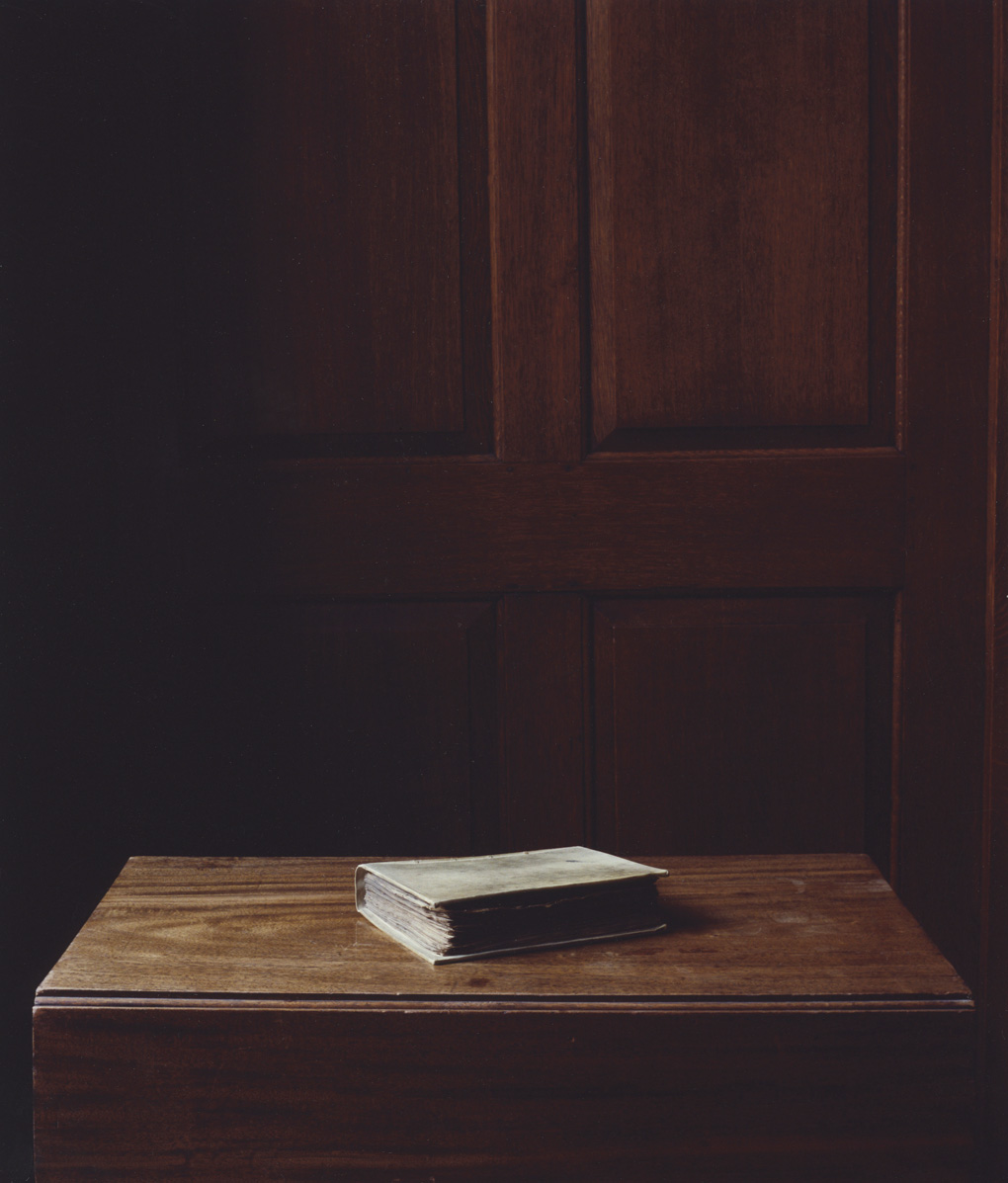
Daniel Gustav Cramer, Untitled (Eusebius-Jerome), 2009. Courtesy: BolteLang Galerie, Zurich, and Daniel Gustav Cramer.
In your work Trilogy, which you started in 2003 (Woodland, Underwater and Mountain), above the landscapes that you photograph (woods, oceans, mountains), above the inalterability of nature, there are notions and questions that evoke magic, eternity, the mysteries of life passing through us.
I understand that these notions are evoked by these series. When I am working on nature I am mainly concerned with composition and color. In the case of these photographs, I believe a frontal, direct view transforms nature. It is inviting, maybe like a gate, and troubling at the same time, rather like images of faces or eyes. Even though photography is a flat, two-dimensional medium, it offers a sense of depth. I like to look at those images as a kind of negative sculpture, imagining a void outlined by foliage and rocks. The camera seems the perfect medium to relate visually to nature. It brings with it a technical neutrality, recording what is there, while actually being a tool of exclusion. I remember vaguely a sentence of Simone Weill that I read some years ago about the experience of being in nature: “How beautiful and perfect must this place be without me being here.” Photography can to some extent place the viewer somewhere, inside an image, where he can exist without his or her own physical presence.
Mountains, oceans, forests in a state of lack of differentiation; shapes and colors whose location and history are unknown to us; places that seem remote, inaccessible; all this makes me think of the subjects in Morandi’s work.
I have a great passion for Morandi’s work. There was a time during my studies when I used to have two almost identical prints of his later still lifes above my bed. In a way, landscape photographs are as much about repetition, differentiation, composition and the visual architecture of spaces as they are about nature, twigs and fog. Morandi’s still life paintings are on the surface about vases and pots, but then they are just as much or maybe much more about essential questions of transience, of composition, of repetition, color, time; and they are also evidence of the daily experiences of his life with his sisters, of light falling through the window into his studio, and much else.
The Loch Ness project appears to link all these notions: a conceptual approach, the archive, images, landscape, books. How do you link this project, that you started in 2002, with the rest of your career?
Several years ago I stumbled over a photograph of a murder scene in the Metro newspaper on the London tube. I kept this image and must still have it somewhere. Instead of showing the scene, the victim or anything which might give any kind of information or evidence to the reader, one was left with this: the reporter arrives at the scene, but he is too late. Three policemen have just finished installing a piece of white cloth to block the path which leads to the location of the murder scene, so as to prevent access and keep it out of sight. The photograph printed in the newspaper shows this scene I have described: the screen at its center framed by the policemen and a bit of greenery and nature around. And it succeeds. The white cloth turns into a kind of projection screen. The person who is not allowed to see, imagines. And in the case of this murder, imagination has to create the scene from scratch: the blood, the knife, body parts. The magic of Loch Ness in Scotland is its surface. A gigantic monotonous, horizontal screen lying flat in the landscape. Hours upon hours have been spent by pairs of eyes looking onto it, scanning it over and over again. It is dark, and it is deep. The loch isn’t just a screen, but also a huge container of memories and images. The loch can be seen as a portrayal of the relation between man and imagination, man and nature. The project is fragmented in smaller parts which all circle around these ideas. For example, when I stayed at the loch last time, in February 2009, I found out about a sheep that fell off a cliff into the loch, survived, managed to get to the nearest beach and stayed there. When it was found two months later, it vehemently fought off the farmer who tried to carry it into the boat. I learned that this happened about eight years ago and that the sheep was still alive, living on the beach surrounded by greenery on both sides and the loch right in front: a real Robinson Crusoe! It is said that the sheep’s wool grew to a length about double the size of the sheep. I also have been collecting etchings, drawings and postcards of the area.
I love this story of the sheep living alone on the beach. I am sure that you know many more stories about animals. It reminds me of this incredible sheep in New Zealand: a Merino sheep that evaded the shearer for six years by hiding out on rocky mountain tops on New Zealand’s South Island. You are really fascinated by animals. I would like to know if this comes from your childhood or from your travels around the world.
I didn’t know of the Merino sheep, it sounds great! Animals are so different from us. We hardly understand their ways of communication, their habits and minds, the way they look, walk and act. Yet, in many aspects they are so similar. When I was a child I tried to convince my parents and brother that I did not want us to have a dog, as I was afraid I would fall in love with him, knowing I would have to face his death – and I did. Whenever I move to a new studio, his collar is one of the first things I install. It’s now hanging on the window handle in front of me.
From all this, it seems that the idea of “ongoing” things is really the one that matters.
Yes, in the works there are different kinds of “ongoing.” There are several series that are still continuing today, among them the Trilogy, Paperworks and Tales. Thinking about it, I haven’t managed to finish one so far. Other works have a circular movement, like Calendar, or in another way the book Objects. For me, it is really satisfying to experience a work that connects to life… how can I put it? It’s like when you are lying in a field, holding hands with the one you love, and you look up to the sky where the stars shine from far away. You wouldn’t be able to really pin down what that feeling is you have for the one next to you, and you can be assured you will never understand what it is your eyes can see, tiny dots representing gigantic unseen worlds. So, you are lying there and everything you relate to is out of reach, abstract. Yet you feel deeply connected to it all, part of life. Art can do that as well. Especially music and poetry, but the visual arts just as much. The notion of ongoing relates to the archives as well. The project is incomplete and open, what has left traces as a work confirms a direction and intention but the total is yet to be formed. An essential part of the Trilogy, a series of landscape photographs (woodlands, mountains and underwater), is to comprise scapes all over the world. I cannot see an end to this project, it needs to expand further, horizontally and in time. Much of what we are doing as artists is what we have been doing all our lives I guess. I remember very well when I was still fairly young how I would climb through a gap in a fence into the neighbor’s garden. There, I would hide behind a bush near the terrace and watch my neighbor sitting and reading a book. I remember how excited I got whenever he turned a page, concealed behind the bush. At times, I would even hide behind the bush with no one on the terrace, staring at the curtains and waiting for them to move. Later, when I managed to climb onto the roof, I spent time looking down into the neighbors’ gardens. They came across as being theater stages, with flowers, chairs and other props arranged around the people living near us and playing at daily life: cutting the grass, sleeping in the armchair, playing cards. It was marvelous. For some reason I never felt like an intruder, more like a neutral observer, without judgment. For ten years now I have been going back to this early passion: observing people in their environment. Somehow, I find in them the blandness and the great tragedy of life. This work, Tales, if you like, has been “ongoing” since childhood…
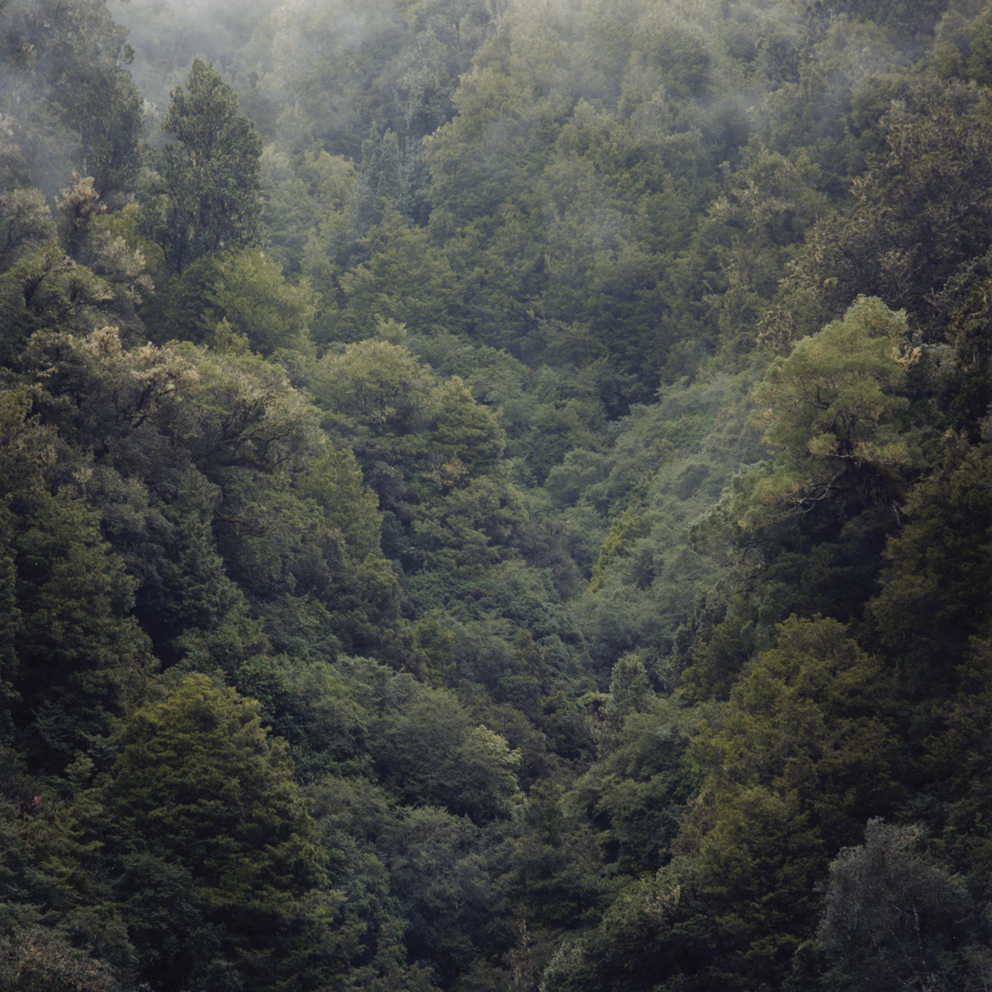
Daniel Gustav Cramer, Untitled (Woodland) #76, 2009. Courtesy: BolteLang Galerie, Zurich, and Daniel Gustav Cramer.
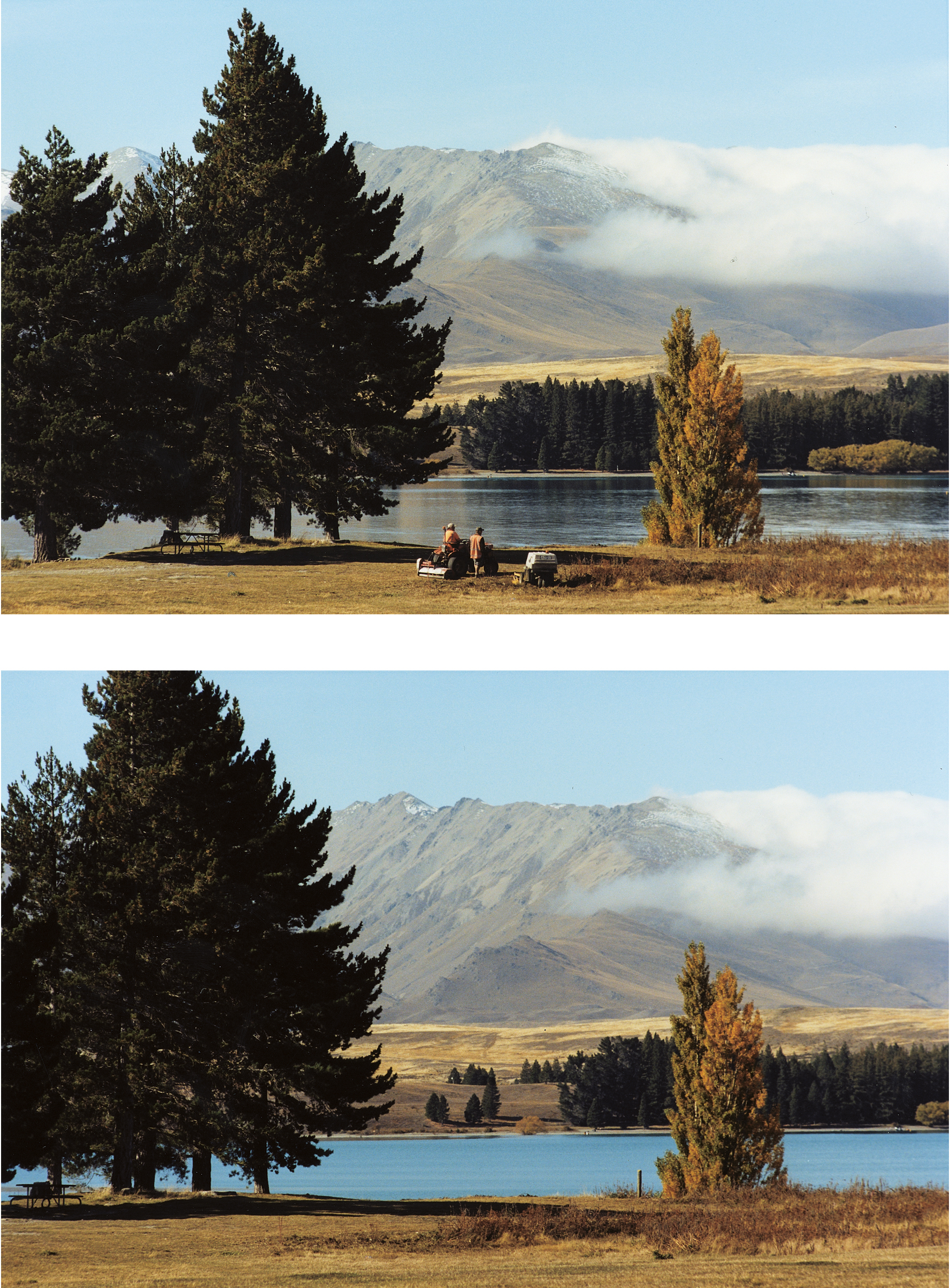
Daniel Gustav Cramer, Tales (Lake Tekapo, New Zealand, 2009), 2010. Courtesy: BolteLang Galerie, Zurich, and Daniel Gustav Cramer
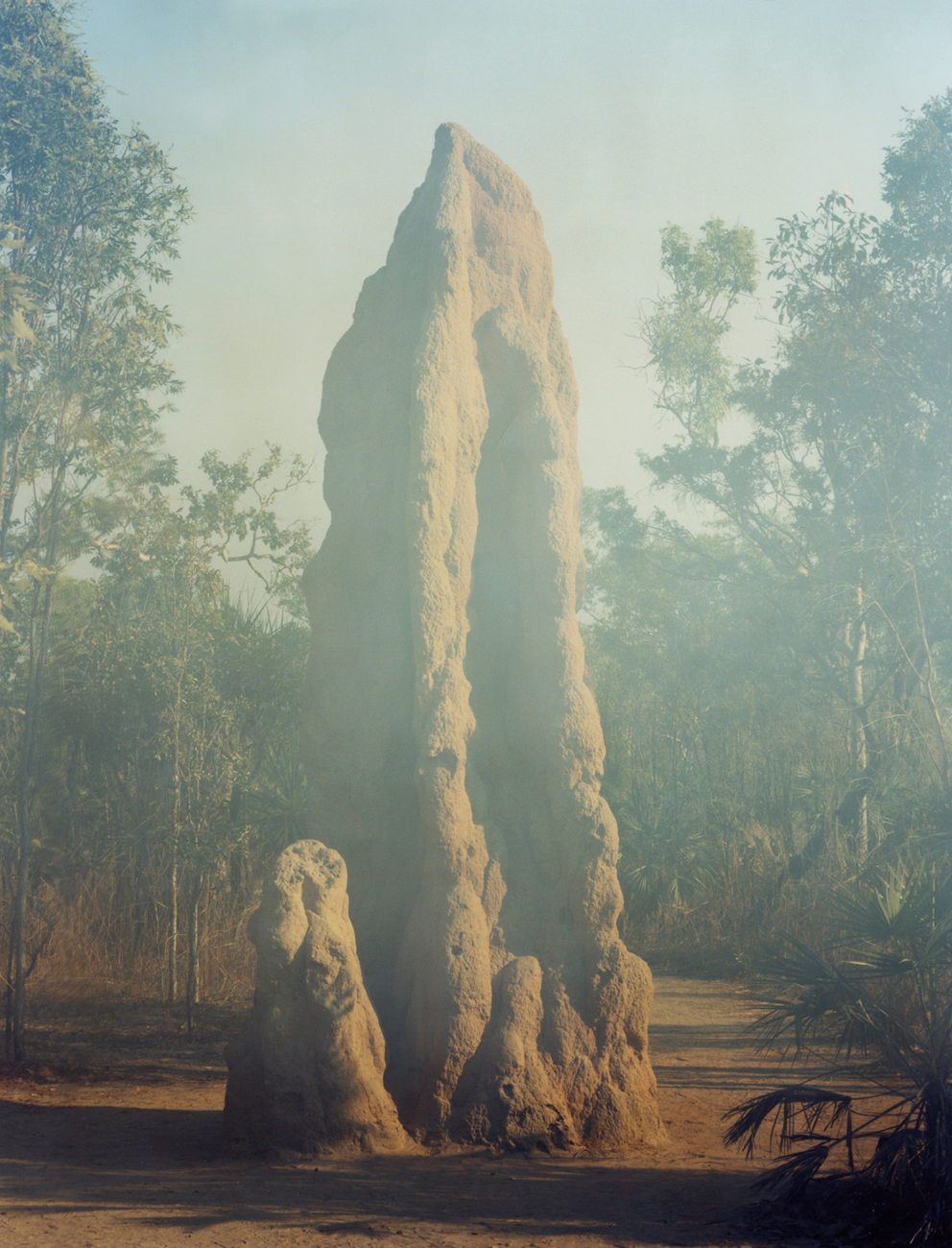
Daniel Gustav Cramer, Untitled (Termite Mound), 2010. Courtesy: BolteLang Galerie, Zurich, and Daniel Gustav Cramer.
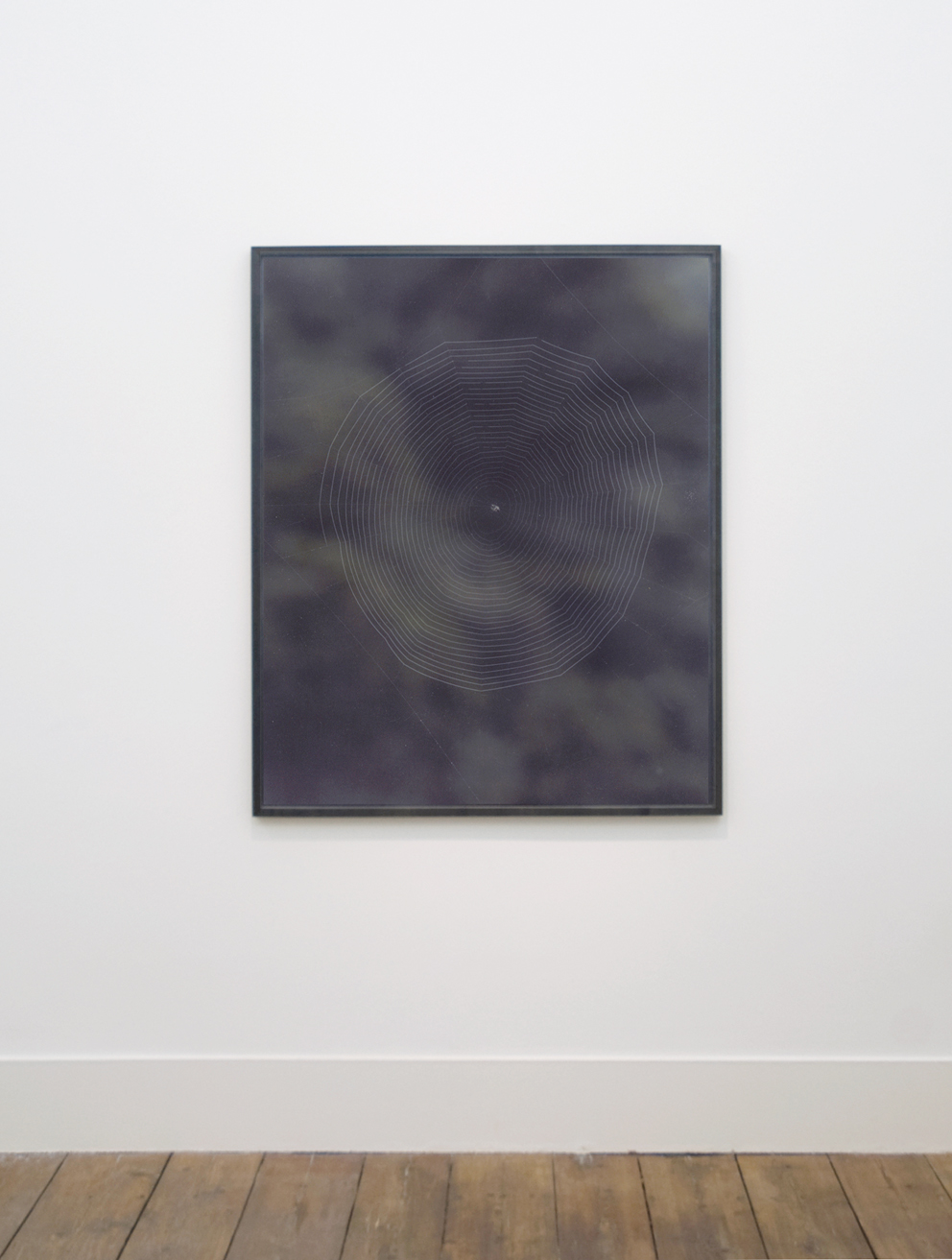
Daniel Gustav Cramer, Untitled (Spiderweb), 2009. Courtesy: BolteLang Galerie, Zurich, Vera Cortes, Lisboa, and Daniel Gustav Cramer.